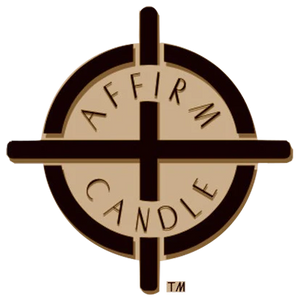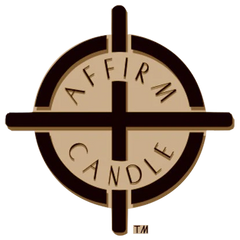What Candles Are Safe? A Guide for Eco-Conscious Consumers

What Candles Are Safe?
In an age where sustainability is more important than ever, the search for eco-friendly products has extended to everyday items, including candles. Nowadays, people are paying more attention to health and environmental issues. This growing awareness is influencing their choices, including the types of candles they buy. Consumers are no longer just seeking candles that emit pleasant scents and create a cozy ambiance; they are also striving to ensure that these candles are beneficial for both their health and the environment, empowering them to make a positive impact with their choices.
Candles create a warm, inviting atmosphere in our homes, perfect for relaxing evenings or cozy gatherings. However, not all candles are created equal. Many contain harmful chemicals, such as paraffin, which can release toxins into the air, impacting our health and the environment. This post will guide you on what to look for in safe candles, including natural wax options like soy or beeswax, eco-friendly choices that use sustainable practices, and how to burn them safely to ensure you enjoy their benefits without the risks. Additionally, we'll discuss proper candle care, such as trimming the wick and providing adequate ventilation, to enhance both the longevity and safety of your candles.
Main Points of this post:
- Prioritize eco-friendly and health-conscious candles for a pleasant ambiance and safe experience.
- Avoid harmful components like paraffin wax and synthetic fragrances to minimize health risks and environmental impact.
- Opt for safer alternatives such as soy wax, beeswax, and coconut wax for clean burning and sustainability.
- Select candles scented with essential oils for natural fragrances and potential therapeutic benefits.
- Practice proper candle care, including trimming wicks and ensuring ventilation, for safety and longevity.
- Choose candles with natural ingredients, lead-free wicks, and eco-friendly packaging to promote a healthier lifestyle and support sustainability.

Understanding Candle Ingredients
Understanding the components of candles helps you make safer and more sustainable decisions, ensuring you enjoy their ambiance without compromising on your well-being. Candles can contain various substances that impact not only their scent and burn quality but also your health and the environment. Here are some common substances to look for and avoid:
Ingredients to Avoid
Paraffin Wax: Derived from petroleum, paraffin wax is commonly used in candles and other household products. However, when it burns, it releases toxic chemicals like toluene and benzene. These are harmful to human health and can pollute indoor air.
Synthetic Fragrances: These are often made from harmful chemicals that can cause respiratory issues. Other issues, such as headaches, dizziness, and long-term lung damage, are noticed in some cases.
Lead Wicks: Although banned in many countries due to health concerns, some candles still contain lead wicks. When burned, these wicks can release harmful pollutants into the air, posing risks to indoor air quality and potentially contributing to respiratory issues and other health problems.

Ingredients to Look For
Soy Wax: Made from soybeans, soy wax is renewable and biodegradable, offering an eco-friendly alternative to traditional waxes. It burns cleaner than paraffin, creating less soot and releasing fewer toxins into the air, making it a healthier option for both the environment and your home.
Beeswax: Another natural alternative, beeswax burns cleanly and has a subtle, honey-like fragrance. It is known for its longer burn time compared to other waxes and doesn't release harmful chemicals, making it an eco-friendly choice for candles.
Essential Oils: Used for natural fragrance, essential oils are a safer alternative to synthetic fragrances. Derived from plants, these oils not only provide pleasant aromas but also offer potential therapeutic benefits, making them a popular choice for those seeking a more holistic approach to health and well-being.
Eco-Friendly Candle Options
For those committed to sustainable living, eco-friendly candles are a fantastic choice. These candles are made from natural, renewable resources and are often packaged in recyclable materials.
Top Eco-Friendly Candle Types
Soy Candles: Made from soybeans, these eco-friendly candles are biodegradable and produce minimal soot, ensuring a clean burn and a healthier environment. Perfect for those who prioritize sustainability and aim to reduce their carbon footprint.
Beeswax Candles: These candles are a natural wonder. Scented by the sweet essence of honey and nectar from flowers, they fill your space with a delightful, subtle aroma. But their benefits continue beyond there. Beeswax candles have air-purifying properties, releasing negative ions to neutralize pollutants and allergens. They also burn longer and cleaner than other types, making them a top choice for eco-conscious homes.
Coconut Wax Candles: Coconut wax is a new, sustainable choice for candles. Made from the meat of coconuts, it burns slowly and cleanly, providing a long-lasting and pleasant fragrance. Unlike traditional paraffin wax, coconut wax is biodegradable and eco-friendly, making it a better alternative for the environment.

Health Benefits and Risks of Different Candle Materials
When selecting candles for your home, it's essential to consider how the different materials can impact your health. Some candles are made from substances that can release harmful chemicals when burned. Understanding the health implications of different candle materials helps make informed choices for a safer living environment.
Health Benefits
Soy and Beeswax: Both soy and beeswax candles burn cleaner than paraffin, significantly reducing indoor air pollution. Soy candles are made from natural soybean oil, making them a renewable resource, while honeybees produce beeswax candles and emit a natural, pleasant aroma. Both options are excellent for creating a healthier home environment.
Essential Oils: Some candles use essential oils for fragrance, which can have various health benefits, including stress reduction and improved air quality. Essential oils like lavender and eucalyptus not only create a pleasant aroma but also promote relaxation and can even help alleviate respiratory issues. Utilizing these candles can turn your living space into a soothing sanctuary.
Health Risks
Paraffin Wax: The combustion of paraffin wax can release carcinogens and respiratory irritants, which can pose significant health risks over time. These substances can contribute to respiratory issues and have been linked to cancer in long-term exposure scenarios.
Synthetic Fragrances: These can cause allergies and asthma in sensitive people, leading to symptoms like sneezing, coughing, and difficulty breathing.
Metal-Core Wicks: When burned, these wicks can release heavy metals into the air, potentially posing health risks such as respiratory issues and environmental pollution.
Tips for Safe Candle Burning at Home
Even the safest candles can pose risks if not burned properly. Here are some tips to make sure you have a safe and enjoyable time burning candles:
Remember to trim the wick: Before lighting, trim it to about ¼ inch. This stops too much soot from forming, ensures a cleaner burn, and makes your candle last longer so you can enjoy its scent and atmosphere for longer.
Burn Candles in a Well-Ventilated Area: Make sure there's plenty of airflow to spread out any possibly harmful particles. You can achieve this by opening windows, turning on fans, or setting up an air filtration system to maintain a clean and safe environment.
Use a Candle Holder: To prevent accidents, use a stable, heat-resistant candle holder. Ensure that the holder is placed on a flat, non-flammable surface away from any drafts or flammable materials. This will help keep the candle secure and reduce the risk of tipping or catching fire.
Never leave a burning candle alone: Always put out candles when you're not in the room or going to sleep to avoid fire dangers. Wait until the wick isn't glowing anymore and the wax has cooled down before you move or throw away the candle.
Keep Away from Flammable Objects: Ensure candles are placed away from curtains, paper, and other flammable materials to prevent potential fire hazards. Always use a stable holder and keep them out of reach of children and pets.
Conclusion
When choosing a candle, prioritize natural ingredients like soy or beeswax. Ensure the wick is lead-free, opting for cotton or wood. Verify fragrances are derived from essential oils. Check for eco-friendly packaging and trusted third-party certifications. This approach guarantees a safer and more sustainable candle choice, promoting a healthier environment.
Choosing suitable candles can significantly impact your health and the environment. By opting for eco-friendly and natural candles, you are making a positive choice for both your home and the planet. Remember to burn candles safely to enjoy their warm, inviting glow without any of the risks.
Take control of your choices and enjoy the relaxing atmosphere of safe, environmentally friendly candles.


